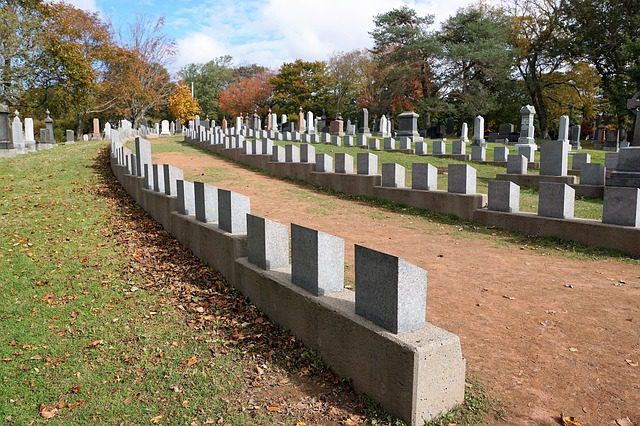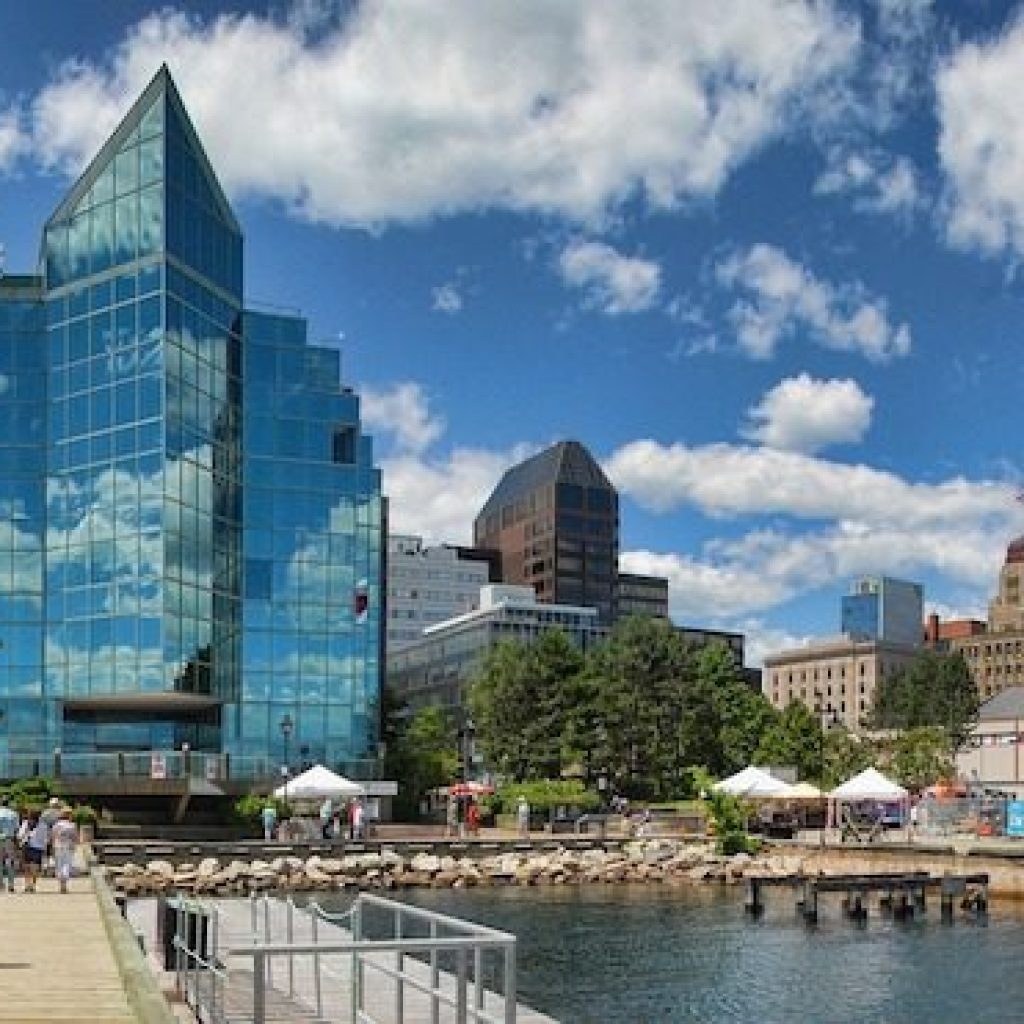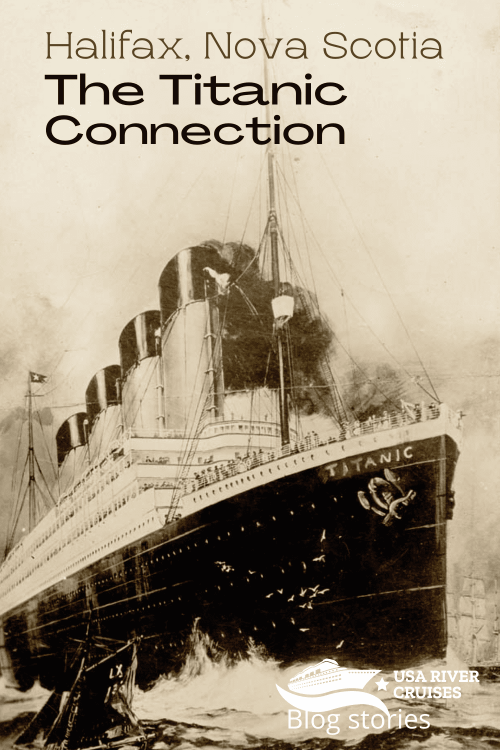
How Halifax Came to the Rescue
Halifax, Nova Scotia
by Dawn Woolcott
On April 15th, 1912 in the midst of an overwhelming crisis, the captain of the SS Carpathia had to make a monumental decision. Already fully loaded with passengers, his ship had just taken on an additional 705 passengers just after dawn. The passengers had arrived in lifeboats, found floating in the middle of the Atlantic ocean after their ocean liner had sunk. The passengers of the Titanic arrived in various states of dress – some wrapped in fur coats, some barefoot and in thin nightgowns. Some arrived carrying small children or their pet dogs. Most arrived in shock-filled grief having just witnessed the death of members of their family.
The Carpathia quickly turned course and headed for the site of the Titanic’s last known location as soon as they received the distress call. As they neared, they sent up a distress flare to let any survivors know they were on the way. The sight of that distress flare in the dim pre-dawn hours must have been seen as a miracle after spending hours floating in the cold darkness of the Atlantic. It was a cold, calm, and dark moonless night, with only millions of stars overhead as light.
Despite the darkness, the weather was in their favor, without the big swells of a storm, or rain to worsen their predicament. Cries of joy must have rung out as the survivors saw the Carpathia heading towards them. As lifeboats reached the sides of the Carpathia, survivors had to climb a rope ladder up the side, or if unable to, be hauled up in a rope sling. Once on board, they were given use of temporary first aid rooms which had been set up in three different locations on board. Every public space on board had been readied to handle what they believed could be up to 2,000 Titanic passengers. What a shock it must have been to find barely 700. As the passengers scrambled on board, they were given soup, hot beverages, and blankets.
Crew members gave up their berths and fellow passengers helped donate clothing to the victims who arrived wearing next to nothing. To a person, everyone had nothing but praise for Captain Rostron and his crew of the Carpathia for how well they cared for the survivors. The ship slowly circled the area looking for survivors still in the water, but found none. The weather was changing and fog had set in.
Captain Rostron now had the difficult decision to make – where to take the survivors? Should survivors be transferred to another ship? Telegraphs flew between the White Star Line headquarters regarding how to handle the deceased as well as the survivors. Several passengers had not survived the journey and died while on board. At first White Star wanted all bodies brought back to Southampton for identification. Should the passengers return to their
original homes of Southampton, Ireland, or France where they had boarded? After much discussion, it was decided to turn and head back to New York with the passengers, knowing it was ultimately their original destination and would probably have friends or family there to meet them. The dead were buried at sea.
White Star Lines hired a smaller cable vessel to troll the area and recover as many victims from the water as they could find. The ship departed Halifax, Nova Scotia and headed towards the debris field with a minister, an undertaker, coffins, canvas bags, and a load of ice. The captain of the Halifax-based SS Mackay-Bennett had the unenviable but noble task of recovering the dead.
Telegraphs with the White Star Line in Southampton flew again as decisions had to be made what to do with recovered bodies. The Captain rejected taking the bodies on the journey that could take several days back to Southampton without enough refrigeration and chose to get them to the nearest large port – back to Halifax. Those that could easily be identified were given an appropriate sea burial. Yet most victims found had no identification on them. The Titanic sunk at close to 2 am, and so many people were not exactly in a state of full dress with a wallet in their back pocket for easy identification.
After five days of searching the debris field, the Mackay-Bennett was overwhelmed finding over 300 deceased and with just one undertaker on board. The White Star Line hired additional ships to continue the search as the Mackay-Bennett headed back to Halifax with 190 bodies. A second ship, the Minia, searched for 8 more days, and was able to recover just 17 additional bodies before returning to Halifax. Two additional ships found 5 more bodies.
A temporary morgue was set up in Halifax to handle the overwhelming duty of processing the deceased. After church services were held, three cemeteries were used to hold the victims. 121 were buried at Fairview Lawn, 19 at Mount Olivet, and 10 at Baron de Hirsch cemetery. If identification was possible, family members claimed some victims to be buried elsewhere and sent off by train. Many of the graves in Halifax are labeled “unknown.” Each cemetery has informational panels indicating the location of the Titanic gravesites.

A few wreckage items found in the debris field made it back to Halifax and are now on display at the Maritime Museum. These include a wooden deck chair, a child’s shoe, a medicine chest and multiple pieces of carved wood decorations. They also have various documents including the Marconi messages from the nearby Cape Race telegraph relay office between the Titanic, the Californian, the Carpathia, and more.
Imagine how different the outcome of this disaster could have been without the invention of the telegraph, barely ten years prior! Marconi’s telegraph cable station at Cape Race is another interesting place to visit while in Nova Scotia. You can also visit the Five Fisherman’s Restaurant and the Mayflower Curling Rink for their connection being used as temporary morgues following the disaster.
Despite the tremendous loss of life, there is still good that comes out of the Titanic disaster. Immediately following, the international maritime rules and regulations were changed to require better and more lifeboats on every ship. Halifax itself came through in crisis, doing everything it could after being thrust into the middle of a disaster. Their experienced maritime crews handled the tragedy well.
The city received and handled the dead with care and dignity. The cemeteries are well maintained and give respect to those who perished. The beautiful harbor of Halifax today is seemingly a world away from the tragedy it endured so many years ago and is a pleasure to visit. Halifax’s part in the Titanic story is one of honor.

Halifax today
In the Path of Cartier-Montreal to Boston
Montreal, QC to Boston, MA
- 11 Nights
- October 6, 2024
- From $4,599
- Oceania Nautica
Canada & New England Fall Foliage Cruise
Portland to Quebec City
- 10 Nights
- October 5, 2024,October 15, 2024,October 25, 2024
- From $9,250
- Pearl Mist
Save this story to Pinterest:



